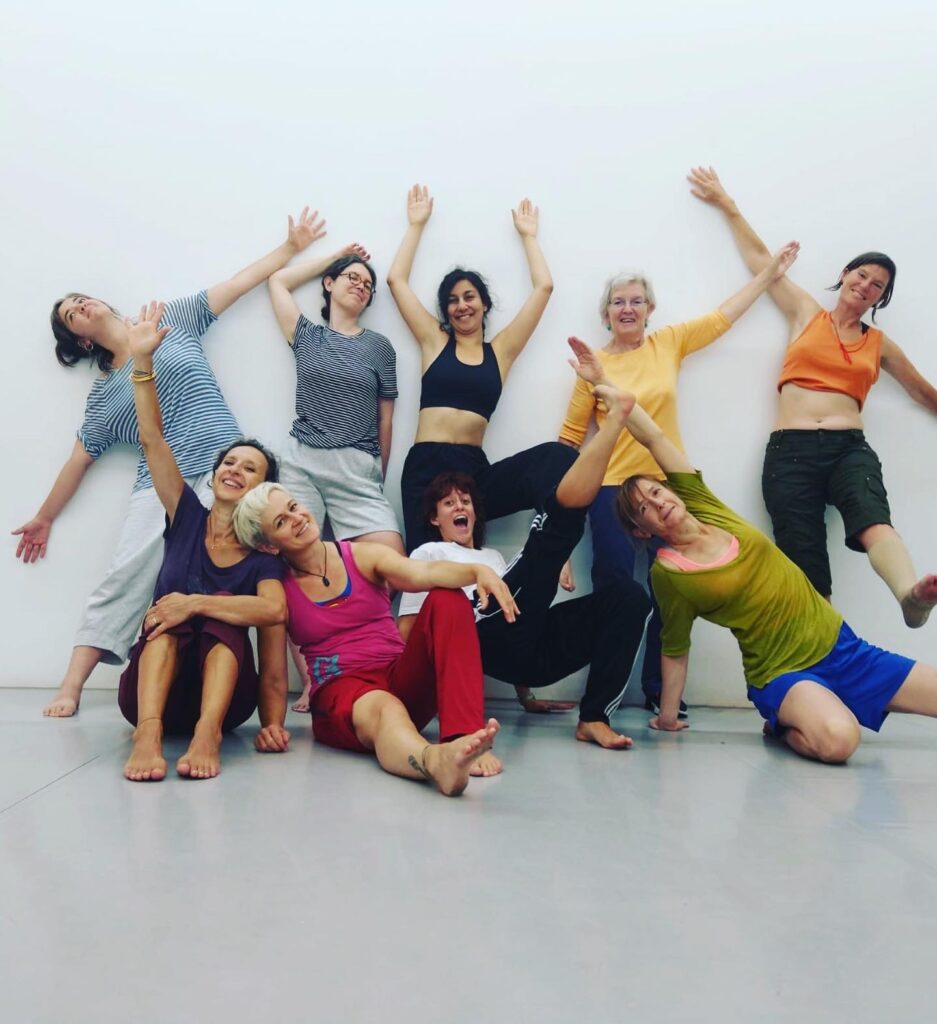 Movement Improvisation for Beginners
Movement Improvisation for Beginners
“Play is the highest form of research” – Albert Einstein
“Play is a state of being” – Katie Salen – play researcher
It’s a state of openness to explore, feel, test, fail, get better… a frame for experiencing the world. Play allows your natural creativity to surface: as John Cleese says, “it’s a relaxed open mode”.
Think back to yourself as a child, you were in this state constantly. It is often conditioned out of us as adults, so the first thing to access again as improvising adults is how to play. After that comes expanded awareness of the present moment, techniques to open up new movement possibilities, different ways to interact with partners and groups etc.
Body play is a way of knowing, and we actually, through movement and play, think in motion. It attunes us to others. We establish trust through the sharing the same tools (or toys), or synchronising our rhythms and energies, creating a social sense of belonging. Our imagination, problem-solving and the brain’s natural storytelling tendency are sparked to respond to the dance emerging. We allow spontaneous new worlds to open up through different movements and sensations, as well as surprise connections with others.
What makes you unique as a dancer? How can you expand your palette of movement possibilities? What options are there for dancing with others?
The essence of Play Space is to help people connect their own improvisational movement style & presence. Inspired by Al Wunder’s Theatre of the Ordinary, the work of Andrew Morrish and Ruth Zaporah’s Action Theater, this class promotes an experiential way of learning. Participants discover what they like doing, what they like seeing and take responsibility for noticing and developing their own style of moving and interacting.
We start warming up the body using a variety of images and exercises focused towards certain themes for each day. We discover how to generate material instantaneously and explore different ways to interact with others using tools of time, space, rhythm, energy etc. The practice, in small or large groups, also includes learning by doing and watching others. This is an essential part of the process of appreciating each person’s uniqueness as dancers and recognising our aesthetic preferences, to further improve our play experience.
One of my mottos is “Serious Fun, serious Play” – I’m dedicated to playing as learning tool for art and life. Play Space is a environment to recognise your creativity, learn and most importantly, have fun – otherwise why dance?!
“The idea of using ‘toys’ is very intuitive and changed my view of dance…Contrast/timing were very new concepts for me and fun to experiment – feel like using different parts of the brain.”
“I had a lot of space in this class for metaphorical pictures and to spread out the fantasy. Clear structure – every day some piece of the puzzle and at the end was a “completed” puzzle…Free spirit in this class…For me it was really interesting to try the improvisation without music because music sometimes influences directly, so it was more natural moving without music.”
“I found the course very well structured and I am very happy about the “tool kit” we assembled :). I liked the attentive and respectful atmosphere we created.”
“Very useful in terms of gathering tools to work with, covering a wide range…nice to have comments while doing the exercises, a reminder of the possibilities that could break the rhythm one is in…I liked the group work at the end of each day”
– participants of Play Space ImPulsTanz 2016
